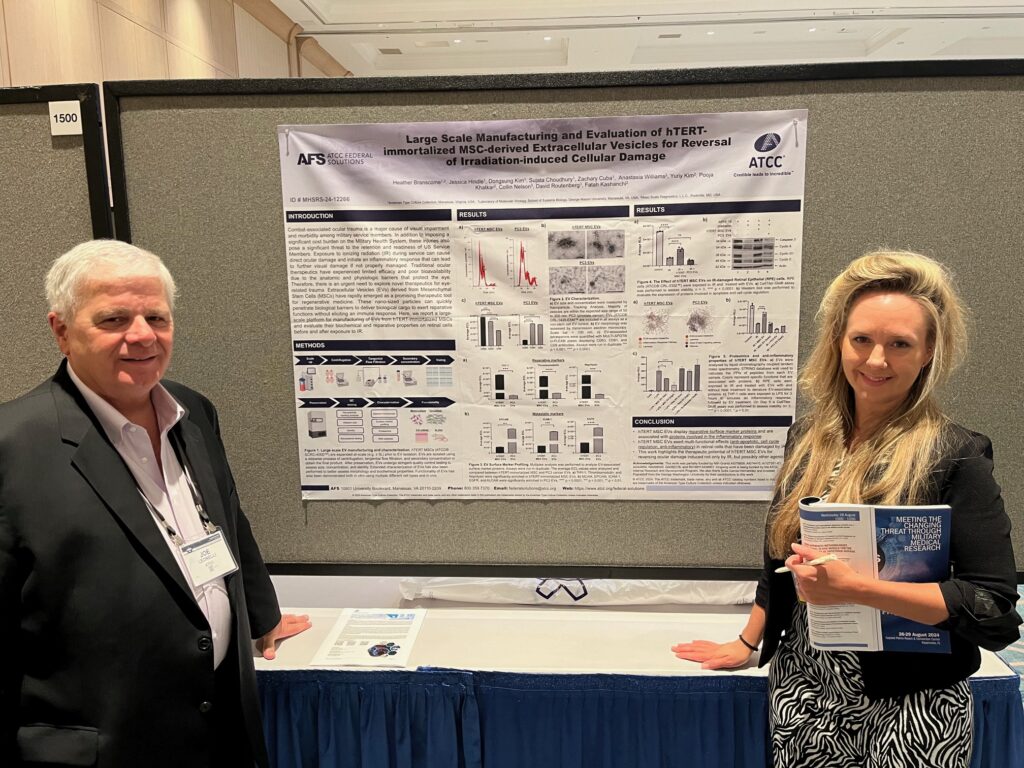MHSRS 2024 DAILY DIGEST – DAY 3
On Day 3 of MHSRS, breakout sessions continued with emphasis on a range of military medical priorities, such as: development of infectious disease countermeasures, treating hemorrhage and managing vascular dysfunction, addressing posttraumatic stress disorder, ethical and regulatory considerations related to biosecurity and AI/ML analytics in DoD-sponsored research and collaborations, lifesaving interventions at point of injury and in prolonged care, mental/behavioral health, DHA tech transfer, evidence-based pain management, global health engagement research, and many more.
Hemorrhage is a leading cause of preventable death for Soldiers in combat and providing improved methods and devices to stop bleeding and restore blood loss and develop new therapeutics to alleviate consequences of hemorrhage and shock physiology are key priorities and goals for the Battlefield Resuscitation For Immediate Stabilization Of Combat Casualties (BRISCC) portfolio of the Combat Casualty Care Research Program. Today’s breakout session on Technologies for the Treatment of Battlefield Hemorrhage and Management of Vascular Dysfunction explored innovations that included: biosynthetic whole blood analogue for treating hemorrhagic shock, silicone-based polymer universal combat matrix for treating arterial injuries, hemostatic pressure dressings tested in simulated extreme cold conditions, treating non-compressible hemorrhage with inorganic nanomaterial-based expandable shape-memory hemostat, among others. If your company is researching or developing interventional strategies and countermeasures in the areas of blood products, fluid resuscitation, mitigation of shock physiology, coagulopathy, pathophysiologic responses to traumatic hemorrhage, and the battlefield management of pain, be sure to check out the CCCRP’s BRISCC portfolio.
In a session on Defense Health Agency Tech Transfer, valuable information about Cooperative Research & Development Agreements (CRADA) was shared. CRADAs are a way to do business with the military in a cooperative way and start a great relationship with interested partners in a way that is beneficial for both parties. CRADAs don't require competition and allow for the lab/MT to receive and provide resources, e.g., personnel, services, equipment, facilities, IP. The Lab/MT can receive funds from Non-Federal collaborator or the awarding Program Office. It sets forth data and IP rights. The collaborator has an option for an exclusive license to any government invention or co-invention. The end game is to help collaborator commercially. G2G has had many successes with CRADAs over the years.
G2G met with the Deputy Director of Defense Health Agency (DHA) Research and Engineering who shared updates on the progress of the years long reorganization of the military health and research system. The flagship research groups in the United States Army Medical Research and Development Command (USAMRDC) based at Ft. Detrick, MD are now integrated into the DHA. Strategic research plans for a few key priority portfolios (e.g. traumatic brain injury, psychological health and infectious disease) for the DHA have been recently published. All new project proposals being submitted to the DHA must align with these strategic plans to be considered for funding, and existing projects must align within a certain timeframe or risk termination. G2G also met with leadership and researchers from the Walter Reed Army Institute of Research (WRAIR) who shared insights on their focus area in brain trauma neuroprotection, and clinical research opportunities in the psychological and sleep health space.
Tomorrow is the last day of MHSRS 2024! While attendance is typically lower on the final day, there are still many valuable sessions we look forward to attending.






